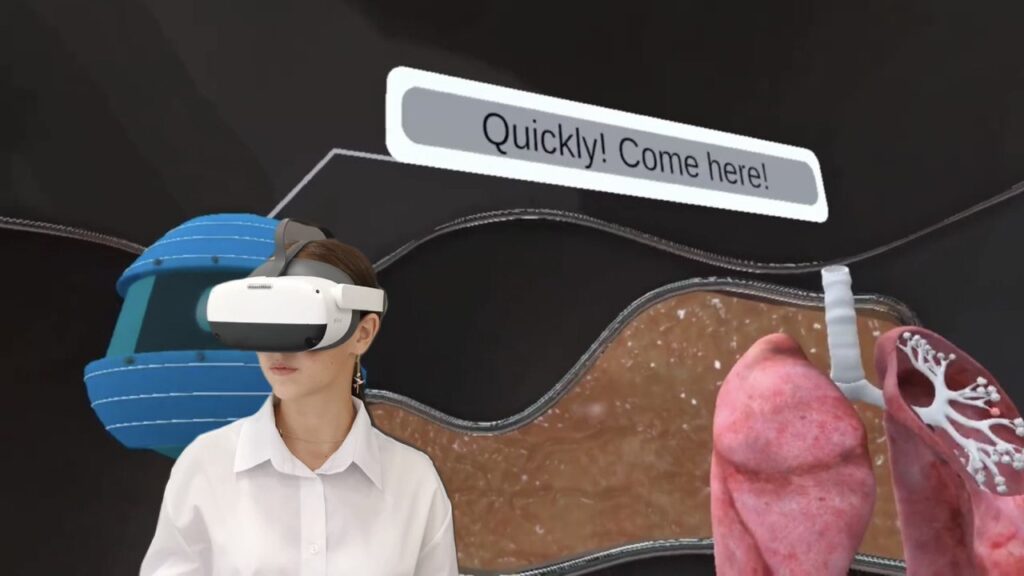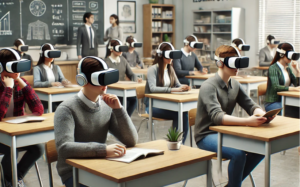A groundbreaking collaboration between the Missouri Biotechnology Association (MOBIO) and XReady Lab is transforming how high-school students learn science. At Webb City High School, learners are stepping into interactive virtual worlds—far beyond what traditional textbooks or computers can offer. Armed with cutting-edge headsets and controllers, students explore intricate biological processes like protein synthesis, mitosis, and even embryonic development. With only a few weeks before this high-tech gear moves to another school, the young scientists of Webb City are making the most of their immersive adventure.
Inside the Collaboration
MOBIO has supplied two dozen sets of advanced equipment to Webb City High School, marking the start of an exciting new era in STEM lab learning. This initiative opens the door to:
-
Practical Insight
Rather than memorizing complex theories, students interact directly with digital models of cells, organelles, and tissues. -
Enhanced Retention
By gamifying lessons on lung anatomy or cellular-level processes, learners absorb and remember scientific concepts more effectively. -
Interactive-Classroom Dynamics
Teachers are finding fresh ways to engage students—replacing static lectures with hands-on experiences that spark deeper interest.
Beyond Biology: Potential for Physics and Chemistry
Although many of the initial lessons focus on biological topics, the same technology can enhance VR physics or VR chemistry classes. Students might soon explore gravitational fields or molecular bonds in a vivid, three-dimensional environment. By stepping virtually into the nucleus of a cell or analyzing gas exchange in simulated lungs, they develop a more holistic view of science—and have fun doing it.
Why Virtual-Reality Education Works

-
Immersive Experiences
Traditional lessons can’t replicate a cell’s interior. But in a virtual environment, learners observe processes like mitosis as though they’re right next to the chromosomes. -
Hands-On Engagement
The excitement of interacting with a digital-classroom platform leads to active participation—a critical factor in real knowledge retention. -
Better Accessibility
Providing advanced interactive-classroom activities is no longer confined to elite universities. Even smaller schools can adopt this approach, especially when local organizations partner to fund or supply the gear. -
Preparing for the Future
Fast-changing career paths demand adaptability and curiosity. Introducing high-tech learning early helps students develop these valuable traits.
Student and Teacher Perspectives
According to Mason Williams, one of Webb City’s students, the headsets and controllers make learning genuinely thrilling: “You can move around inside a cell and watch how proteins form. It’s way more interesting than just looking at pictures.” Teachers also report that using virtual reality in education encourages class participation and makes students more eager to discuss what they’ve learned outside of school hours.
The feedback is clear: “It’s fun, engaging, and unique,” says a representative from MOBIO. Integrating immersive technology helps kids see science as a world to explore, rather than a subject to endure.
Sample Simulations and Activities
GAS EXCHANGE
Explore lung anatomy and learn how breathing truly works—from inhalation to cellular-level gas exchange. Gamified elements keep students actively involved, helping them absorb essential biology concepts more effectively. Compatible with Meta Quest, Meta Quest 2, Meta Quest Pro, Pico Neo 3, and Pico 4, this simulation offers adjustable settings to suit different learning objectives. Students discover the specialized surfaces for gas exchange, the processes linking blood and air, and the key components involved in respiration.
View Simulation
MITOSIS
Witness cell division like never before with an immersive VR biology lesson on mitosis. Designed for educators and students, this tool employs vivid visuals and interactive features to clarify each stage of mitotic division—something textbooks alone can’t match. Compatible with Meta Quest, Meta Quest 2, Meta Quest Pro, Pico Neo 3, and Pico 4, the simulation dives into organelle functions, the distinct steps of cell division, and the events unfolding in each phase of mitosis.
View Simulation
A Future-Focused Model
This partnership highlights the benefits of virtual reality in education—from more profound comprehension to heightened enthusiasm for science. It also points to a broader movement, where technology in schools is no longer a luxury but a core part of modern pedagogy.
For Webb City High School, the gear stays only for a few weeks. However, the shift in mindset may remain. Students enrolled in such a high-tech environment gain an advantage when transitioning to college or exploring career paths in biotechnology, healthcare, or engineering.
Ready to Bring Immersive Learning to Your School?
Elevate your STEM curriculum with interactive-classroom activities that engage and inspire. By adding VR biology, VR physics, or other immersive lessons to your daily routine, you can ignite curiosity, reinforce theoretical concepts, and nurture a genuine love for scientific exploration.
Request a Free Demo to see how one VR-classroom setup can transform the way students discover, experiment, and connect with the world of science.







